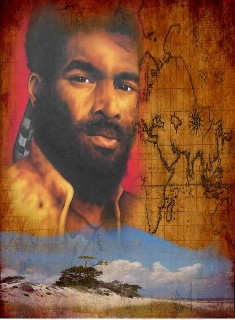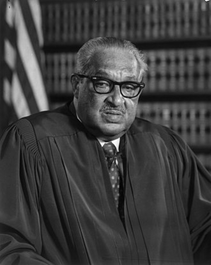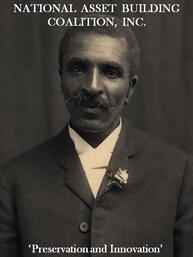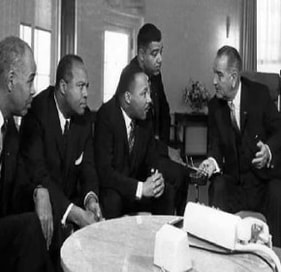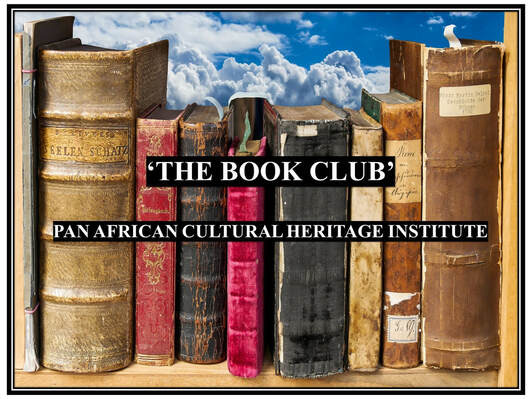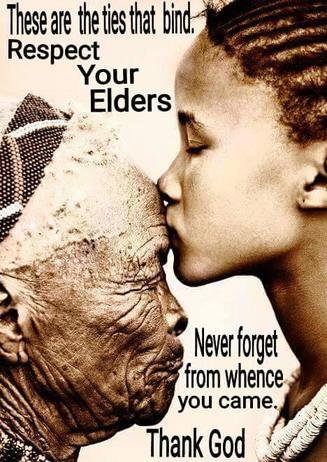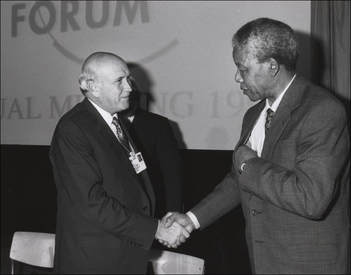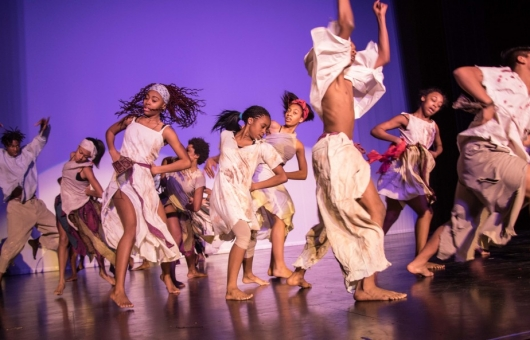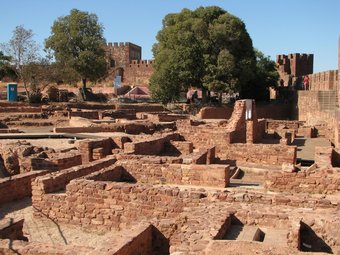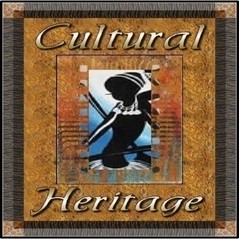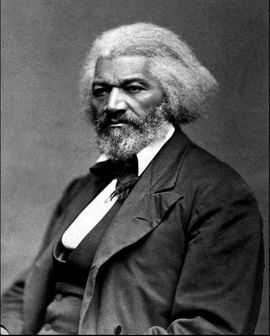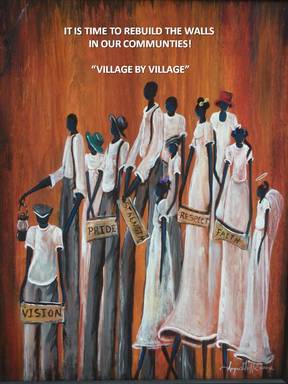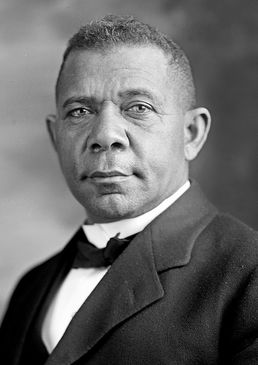Africa - Europe – Caribbean – South America
Central America – North America
Researching the Diaspora’s Culture and History
– “Village by Village!”
.
..A Greater Vision for the Pan African Cultural Heritage Trails:
Celebrating Our Routes (Roots) in the United States
And Throughout The Diaspora!
..A Greater Vision for the Pan African Cultural Heritage Trails:
Celebrating Our Routes (Roots) in the United States
And Throughout The Diaspora!
The Pan African Cultural Heritage Institute celebrates the culture and connectivity of the people of the African Diaspora. The African Diaspora being defined as people of African descent who live as cultural and national communities in Africa, Europe, the Caribbean, South America, Central America, and North America.
Mission:
To serve as the “Think Tank” for the National Black Chamber of Commerce Federation and the affiliates of the National Black Business Support Corporation. The Institute will also serve as a research center, in support of chambers, state and local governments, community and economic development groups. Its role will be to perform unbiased research and provide white papers and opinions on cultural commerce issues that affect all cultures, particularly African Americans. The ultimate goal being: to provide research documentation of the problem areas; show opportunities for improvements in those areas, and implementation by local communities to alleviate those disparities.
Mission:
To serve as the “Think Tank” for the National Black Chamber of Commerce Federation and the affiliates of the National Black Business Support Corporation. The Institute will also serve as a research center, in support of chambers, state and local governments, community and economic development groups. Its role will be to perform unbiased research and provide white papers and opinions on cultural commerce issues that affect all cultures, particularly African Americans. The ultimate goal being: to provide research documentation of the problem areas; show opportunities for improvements in those areas, and implementation by local communities to alleviate those disparities.
Estevanico, Pan Africa's Greatest Explorer
|
The Pan African Cultural Heritage Institute was created in honor of the life of the first person of African descent to set foot on North American soil. Estevanico was born in Azamor, Morocco. When he was a teenager, during the drought of 1520-21, the Portuguese sold many Moroccans into slavery. Estevanico was sold to Andres de Dorantes, and the two joined an expedition to the lands of Florida. It was to be a tragic expedition: Although they reached Florida in 1528, many on the expedition died of illness, injuries and attacks. Many fled by boat, reaching the Texas coast, where they were enslaved. By 1534, only four were alive: Estevanico, Dorantes, Alvar Nuñez Cabeza de Vaca and Alonso del Castillo Maldonado.
The saga of Estevanico is symbolic and recognizable to all people in the African Diaspora. His courage under duress, his intelligence and survival skills are culturally evident. But most importantly, Estevanico was a product of his faith teachings and his culture. His heritage gave him the pride and stamina to endure and to serve as a humanitarian to those less fortunate. Gifted, he used those gifts in relationships with other cultures for the benefit of the whole. Although enslaved, Estevanico became a leader, an explorer, an educators, a healer and a spiritual ambassador for every culture he represented. And the Pan African Cultural Heritage Institute was created as a way on celebrating his life and many others, and to connect the African Diaspora by showcasing our culture and economic prowess. Let us celebrate! Village by Village! The Pan African Village! We are One! One Culture, One Heritage! Africa, Europe, Caribbean, South America, Central America, North America. One Village! |
Our Cultural Heritage Icons:
|
“We are the custodians, as well as, the heirs of a great civilization. We have given something to the world as a race, and for this, we are proud and fully conscious of our place in the total picture of mankind’s development.” Mary Jane McLeod Bethune Education means emancipation. It means light and liberty. It means the uplifting of the soul of man into the glorious light of truth, the light by which men can only be made free. Fredrick Douglas "A people without the knowledge of their past history, origin and culture is like a tree without roots". Marcus Garvey “If we just build our businesses and only do business with each other, we not only will survive but prosper.” Booker T Washington *Neither look up to the rich nor down on the poor; *Lose, if need be, without squealing; *Be clean both inside and out; *Win without bragging; *Always be considerate of women, children, and older people; *Be too brave to lie; *Be too generous to cheat; *Take your share of the world and let others take theirs. George Washington Carver - "Education is the key to unlock the golden door of freedom." |
|
"I am not African because I was born in Africa, but because Africa was born in me". Dr. Kwame Nkrumah “If you can control a man's thinking you do not have to worry about his action. When you determine what a man shall think you do not have to concern yourself about what he will do. If you make a man feel that he is inferior, you do not have to compel him to accept an inferior status, for he will seek it himself. If you make a man think that he is justly an outcast, you do not have to order him to the back door. He will go without being told; and if there is no back door, his very nature will demand one.” ― Carter G. Woodson, The Mis-Education of the Negro |
|
"What is the quality of your intent? Certain people have a way of saying things that shake us at the core. Even when the words do not seem harsh or offensive, the impact is shattering. What we can be experiencing is the intent behind the words. When we intend to do good, we do. When we intend to do harm, it happens. What each of us must come to realize is that our intent always comes through. We cannot sugarcoat the feelings in our heart of hearts. The emotion is the energy that motivates. We cannot ignore what we really want to create. We should be honest and do it the way we feel it. What we owe to ourselves and everyone around is to examine the reasons of our true intent. My intent will be evident in the results." Supreme Court Justice Thurgood Marshall |
Pan African Cultural Heritage Economic Development Initiative
Sharing “Our Cultural Knowledge and Experiences” in the areas of Commerce, Culture, Community, Education, Influence, Knowledge, and Faith; via established business, educational, social and tourism networks. The ultimate goal being: to “Rebuild and Connect” the global people of PAN AFRICA, via the technology platforms of the internet and to use proven Cultural Economics and Heritage Tourism programs to develop Forgotten Communities, foster prosperity through business growth and job creation; and to facilitate cultural exchanges and services with other members of the African Diaspora, in partnership with the Pan African Cultural Heritage Alliance.
The Pan African Cultural Heritage Alliance
The Pan African Cultural Heritage
Key Cultural Heritage Websites:
Florida Black Chamber of Commerce, Inc.
www.floridablackchamber.com
National Black Business Support Corporation
https://www.nbbsc.org
Pan African American Cultural Heritage Market Place -
https://www.paachmp.com
National Cultural Heritage Tourism Center, Inc.
https://www.nationalculturalheritagetourismcenter.com
Pan African Cultural Heritage Institute, Inc.
www.panafricanchi.org
National Asset Building Coalition, Inc.
www.natlassetbldgcoalition.com
National For Artist - By Artist Society
www.fabaarts.org
www.floridablackchamber.com
National Black Business Support Corporation
https://www.nbbsc.org
Pan African American Cultural Heritage Market Place -
https://www.paachmp.com
National Cultural Heritage Tourism Center, Inc.
https://www.nationalculturalheritagetourismcenter.com
Pan African Cultural Heritage Institute, Inc.
www.panafricanchi.org
National Asset Building Coalition, Inc.
www.natlassetbldgcoalition.com
National For Artist - By Artist Society
www.fabaarts.org
Programs
Art & Entertainment Network -
https://www.culturalartnetwork.org
Faith! -
https://www.faithcommunitynetwork.org
Pan African American Travel Club -
https://panafricanamericantravel.net
https://www.culturalartnetwork.org
Faith! -
https://www.faithcommunitynetwork.org
Pan African American Travel Club -
https://panafricanamericantravel.net
The Pan African Cultural Heritage Social Network
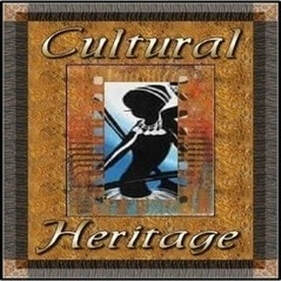
Like us, learn, and share our culture heritage experiences and observations via our facebook network.
SOUTHERN CULTURAL HERITAGE SOCIETIES
Let Us Celebrate our Cultural Roots! Travel Down SOUTH!
African American Culture and History is rooted in the South. More than half of the 47 Million African Americans live in the South. 85 percent of all African Americans lineage can be traced to a Southern State. For many years African-American culture developed separately from European-American culture, both because of slavery and the persistence of racial discrimination in America, as well as African-American slave descendants' desire to create and maintain their own traditions.
Today, African-American culture has become a significant part of American culture and yet, at the same time, remains a distinct cultural body. The ‘Southern Cultural Heritage Society is a Grassroot Alliance of Cultural Leaders from each of the Southern States who have come together to celebrate the Culture and Heritage of Black America in the South as a catalyst for Economic and Community Development, in partnership with the Pan African Cultural Heritage Alliance, and using Cultural Heritage Tourism as a marketing platform. The ultimate goal being, to connect the South to Pan Africa and to all People of African Descent.
See the Pan African Cultural Heritage Societies Facebook Pages: Click here
The Pan African Cultural Heritage Media marketing and advertising program offers advertising options across many media channels including website, e-Newsletter, digital magazine, contests, social and more. We pride ourselves on being partners with our advertisers and consulting with them to meet their unique business needs throughout the entire process.
Increase your marketing impact by taking advantage of the low-cost/high-value advertising opportunities to reach a prestigious audience on a global scale. Maximize your visibility by promoting your business or service in the Pan African American Cultural Heritage Market Place suite of advertisement platforms.
Our E-Magazines
Our TUBE:
Pan African Cultural Heritage Institute YouTube Channel
Visit our channel click below
The Pan African Cultural Heritage Institute YOU Tube Channel (‘The Tube’) is an educational and cultural heritage awareness promotional platform that was developed in partnership with the Pan African Cultural Heritage Institute and African Network TV of Gainesville, Florida. Edutainment is the primary intent of the videos shared on ‘The Tube”.
The Pan African Culture and History is “Rich” and Robust! Neglected and abused by others for personal gain, confusion exists on what is true. Using the knowledge and research of educators, historians, researchers, artisans, and the expertise and relationship of ANTV, the Institute is excited about the opportunities that lies ahead. Become a supporter of the ‘Tube’ by joining the Pan African Cultural Heritage Society as a member. We are dedicated in our efforts to promote the Pan African American Cultural Heritage Initiative, by sharing the culture and history of Pan Africa. Share!
The Pan African Culture and History is “Rich” and Robust! Neglected and abused by others for personal gain, confusion exists on what is true. Using the knowledge and research of educators, historians, researchers, artisans, and the expertise and relationship of ANTV, the Institute is excited about the opportunities that lies ahead. Become a supporter of the ‘Tube’ by joining the Pan African Cultural Heritage Society as a member. We are dedicated in our efforts to promote the Pan African American Cultural Heritage Initiative, by sharing the culture and history of Pan Africa. Share!
'THE INSTITUTE'
Promoting the Culture and Heritage of People of African Decent across the Globe!
Through
Education, Heritage, Culture, Commerce, Community, Influence & Knowledge, Faith
Research and Learning...
The Pan African Cultural Heritage Institute was founded to serve the Global Diaspora, with its focus being, the “Sharing of Knowledge”, for economic, business and community development. The cornerstone of the Institute is its use of technology to conduct research and create educational platforms that will address common issues that limit economic, community, business and cultural growth.
The mainstay of our effort is to create alliances with other like-minded organizations and individuals, in a multi-cultural environment that can bring resources and assets to the table, without sacrificing their own mission or identity. We seek partnerships with individuals and organizations that strive to solve cultural, social and economic issues and unite the Pan African community. The Institute desires a relationship with Historical Black Colleges and Universities; and all institutions and corporations who desire to participate in promoting diversity and economic development globally.
The mainstay of our effort is to create alliances with other like-minded organizations and individuals, in a multi-cultural environment that can bring resources and assets to the table, without sacrificing their own mission or identity. We seek partnerships with individuals and organizations that strive to solve cultural, social and economic issues and unite the Pan African community. The Institute desires a relationship with Historical Black Colleges and Universities; and all institutions and corporations who desire to participate in promoting diversity and economic development globally.
Cultural Heritage CMAP Research Center
Powered by Cmap Tools
The IHMC CmapTools program empowers the Pan African Cultural Heritage Institute to conduct knowledge based research in a host of areas. The CMAP Tools Program will allow researchers the ability to construct, navigate, share and criticize knowledge models represented as concept maps. It allows users to, among many other features, construct their Cmaps in their personal computer, share them on servers (CmapServers) anywhere on the Internet, link their Cmaps to other Cmaps on servers, automatically create web pages of their concept maps on servers, edit their maps synchronously (at the same time) with other users on the Internet, and search the web for information relevant to a concept map.
CmapTools is used worldwide in all domains of knowledge and by users of all ages to graphically express their understanding. In particular, CmapTools is used in schools, universities, government organizations, corporations, small companies, and other organizations, both individually and in groups, for education, training, knowledge management, brainstorming, organizing information, among other applications. The collaboration and publishing features provide a powerful means for representing and sharing knowledge.
The IHMC CmapTools will give the Institute Fellows the ability to collaborate across the globe and interact with any member of the Pan African culture to conduct research and solve problems.
The CMAP Tools was developed by the Institute for Human and Machine Cognition , Pensacola, Florida co-founder Alberto Canas. Alberto J. Cañas was born in Costa Rica. He is Co-Founder and an Associate Director of the Institute for Human and Machine Cognition. He received a Bachelors Degree in Computer Engineering from the Instituto Tecnologico de Monterrey, Mexico, and a M. Math Degree in Computer Science and a Ph.D. in Management Science, both from the University of Waterloo, Canada. He has taught at the Instituto Tecnologico de Costa Rica, Tulane University and INCAE (in Costa Rica). From 1989 to 2005, he was part of the Computer Science Department at the University of West Florida (UWF).
For many years, Prof. Cañas has been involved in the use of technology in education, specifically in the K-12 area. Before going to the University of West Florida, Prof. Cañas was the Director of IBM's Latin American Education Research Center in Costa Rica. Prof. Cañas is interested in understanding the pedagogical aspects of using technology, and taking advantage of his Computer Science background to come up with innovative solutions. He is interested not only in the theoretical aspects, but also in the implementation details and scalability of the use of computers in education.
His research include: uses of computers in education, knowledge management, knowledge acquisition, information retrieval, and human-machine interface. He is currently involved in research projects at IHMC in: Knowledge Modeling and Sharing, Performance Support Systems with Embedded Training, Collaborative Tools for Education and for Research, Multimedia-based Knowledge Construction and Browsing Tools, Distance Education, and Corporate Memory. Prof. Cañas has published extensively and has lectured throughout many countries in North and Latin America, Europe, Africa and Asia.
Pan African Cultural Heritage Library
“The Pan African History is a History of Overcoming and Perseverance”
CMAP Tools is the platform that allows the Pan African Cultural Heritage Institute to host the Pan African Cultural Heritage Library of history of the People of Pan Africa as a collector of digital document on the history and culture of People of African Descent.
'THE VAULT'
The VAULT – (A White Paper Repository)--is a forward-looking and panoptic approach assuring the vitality of Pan African communities and enterprises by the publication of academic papers and theoretical writings that will allow policy makers, educators, community leaders, and business owners to view proven- successful economic and community development models that can be implemented to create jobs and business opportunities in partnership with Historical Black Colleges and Universities and other global institutions of learning.
The secondary mission is to introduce resource knowledge and their locations to grass-root organization seeking to improve services and drive development of blighted urban and rural areas. This service we believe will lead to partnering relationships in targeted areas and will enhance local governmental agencies potential for success in redeveloping these locations. Additionally this service will accomplish several goals: a) reduce the learning curve of Pan African entrepreneurs and community redevelopers; b) focus the government, business and community leaders on valid business strategies; c) create opportunities for Pan African enterprises to ally themselves with appropriate professionals and networking partners; and d) use a team approach to solve difficult business and redevelopment issues, thereby enhancing the success of the underlying business and community.
This concept, in tandem with services offered by other federal, state and local governmental agencies and chambers and non-profits, will add greatly to the options, currently offered Black business enterprises and disadvantaged communities.
The secondary mission is to introduce resource knowledge and their locations to grass-root organization seeking to improve services and drive development of blighted urban and rural areas. This service we believe will lead to partnering relationships in targeted areas and will enhance local governmental agencies potential for success in redeveloping these locations. Additionally this service will accomplish several goals: a) reduce the learning curve of Pan African entrepreneurs and community redevelopers; b) focus the government, business and community leaders on valid business strategies; c) create opportunities for Pan African enterprises to ally themselves with appropriate professionals and networking partners; and d) use a team approach to solve difficult business and redevelopment issues, thereby enhancing the success of the underlying business and community.
This concept, in tandem with services offered by other federal, state and local governmental agencies and chambers and non-profits, will add greatly to the options, currently offered Black business enterprises and disadvantaged communities.
The ‘Cultural Heritage’ Leadership Academy
|
An integral part of Pan African Cultural Heritage Institute, the goal of this program is to reinforce the Institute’s mission of creating cultural ambassadors for the world and to develop leaders with character and leadership skills. The focus will be teaching that next generation of leaders from a cultural perspective and to use proven historical experiences as a teaching foundation and as inspiration to prepare the student to appreciate their responsibilities and seek out opportunities that will make their community and the world a better place. The ultimate vision of the Pan African Cultural Heritage Leadership Academy is to make clear that the power of leadership comes with the responsibility of a deep appreciation for other cultures and to assist each student in discovering and developing their unique leadership skill and vision of the world. |
Cultural and Economic Asset Building
Purpose
The National Asset Building Coalition’s purpose is to expand and engage voices to reach policy makers through partnerships, collaborations, and coordination of efforts for enhancing the quality of life and economic opportunities for communities of color; who are impacted by economic inequality, economic disparities, and persistent poverty.
WHO
National Asset Building Coalition: A collaboration of Community-Based and Faith-based Organizations, Chambers of Commerce
Asset building Organizations, Social Service Agencies, Financial Institutions, Emergency Management Services/Programs, Coalitions, Universities, Knowledge Centers and Prosperity Campaigns; whose strategic focus is building an inclusive agenda and deliberate strategies, that will create policies impacting communities of color and low to moderate income families.
MISSION:
Engage, expand and include grassroots and non-traditional community-based groups, business owners, and the emerging young leaders in closing the racial and wealth gap among communities of color and all low and moderate income families.
VISION
- Empowered communities of color and the low-and moderated income families creating and sustaining wealth creation opportunities, communications and advance technology for improved economic financial stability.
- This effort will be combined with new innovative goals and integrated solutions created by this statewide coalition to increase its capacity to strengthen community networks, organizations, and initiatives aimed towards the creation of policies that will offer access to opportunities for viable livelihoods, improve the quality of life for the working poor and support asset accumulation and savings throughout the life cycle.
- To determine how well policies serve the needs of the total population, especially in communities of color.
The National Asset Building Coalition will craft an agenda for determining the needed amended policies, support systems, programs and services that provide stability for households in the targeted communities.
NABC SEEKS: To build an interdisciplinary, multi-ethnic and geographically diverse coalition utilizing networks and partnerships to promote innovative strategies and solutions that build and strengthen wealth creation and asset building efforts through mobilizing a grassroots advocacy movement.
- To expand the voices to reach and inform state legislators and key stakeholders on asset building policies.
- To foster strategic partnerships
- To work on policy issues on local, state and national levels.
- To connect the dots on how to work with states and national policy makers
KEY STRATEGIES
- To inform and support a policy agenda connecting common threads of systematic service delivery designed for disadvantaged communities family
- To collaborate,' partnership and network to provide short and long range services.
- To serve as a catalyst to change in reframing the context of asset wealth creation for people of color.
- To build new knowledge and best practices in the field of asset building.
CORE PRINCIPLE
we believe that asset-building is one of many components that will lead to alleviating the systematic impoverishment and disfranchisement of people of color and the low-moderate income families.
FAITH: Rebuilding the Walls in Forgotten Communities
We support the works of the following faith community organizations:
The Collective Empowerment Group, Inc. (CEG), formerly the Collective Banking Group, Inc. (CBG), was formed in 1993 as a result of concerns raised by pastors and church members in Prince Georges County and the Metropolitan D.C. area regarding inequitable access to services provided by local banks and businesses. Churches were faced with severe challenges due to redlining and other questionable practices.
In 2010, the Board and member pastors reflected on the evolution of the CBG. Over the years the organization had become a national faith-based community economic empowerment group, still advocating just treatment from banks…and much more. By unanimous decision of the Board, the Collective Banking Group became the Collective Empowerment Group, with increased focus on financial literacy, education, healthcare, home ownership preservation, public safety and public policy. The new name demonstrates the CEG’s expanded role in “building a healthy and empowered church, people and community.”
MISSION STATEMENT
A Christian ministry, in covenant relationship with member churches, and partnership
with financial institutions, businesses, and other organizations for community empowerment.
with financial institutions, businesses, and other organizations for community empowerment.
VISION STATEMENT
To collectively empower under served communities
Building the power of organized people to do justice
The Direct Action and Research Training Center, or DART, is a national network of 21 affiliated grassroots, nonprofit, congregation-based community organizations. DART organizations bring people together across racial, religious and socioeconomic lines to pursue justice in their communities. Since 1982, DART has trained over 10,000 community leaders and 150 professional community organizers, who together have won victories on a broad set of issues, including:
- Proven approaches to limit out of school suspensions and juvenile arrests
- Reading instruction and fair suspension policies in public schools
- Multi-million dollar investments in affordable housing
- Massive multi-million dollar expansions of public transportation
- Accessible health care reform in several major metropolitan cities Investment in jobs training and opportunities
- Clean-up of drugs and crime
- Dozens of other issues important to low-income communities
Our Mission Scripture describes a vision for a society where God’s bounty is plentiful and shared by all, and justice flows down like a mighty river. Yet poverty, violence, corruption and despair plague our cities. As people of faith, God requires us to “do justice,” and redeem fallen systems. DART’s mission is to engage congregations in pursuit of this vision.
Our History: Below you’ll find a timeline, documenting DART from inception to present. As you will see, DART continues to expand to new locations and seeks bright, talented, driven people to contribute to DART’s mission and history, like so many have in the past.
1977 – Rev. Herb White, staff to the United Church Board for Homeland Ministries, United Church of Christ and several local leaders hires John Calkins, DART’s current Executive Director, and founding member, to organize a senior citizens organization in Miami known as Concerned Seniors of Dade. It quickly establishes itself as an organization capable of routinely producing hundreds of people to press city officials around fairness issues concerning seniors:
1980 – A three-day riot erupts in the city of Miami after an all-white jury acquits several white Miami police officers of beating to death Arthur McDuffie, a black insurance salesman. Eighteen people die during the riots and more than $100 million are lost in property damage. Leaders from Concerned Seniors of Dade sponsor an organizing drive among African-American congregations throughout Miami, which eventually becomes People United to Lead the Struggle for Equality (PULSE) organization.
1980-85 – Along with winning several local issues related to minority hiring and job creation, PULSE turns its attention to the continued lack of accountability within the Miami police department. Several highly suspicious incidents of police killing African-Americans occur, yet officers are consistently being acquitted of wrongdoing in court. PULSE discovers attorneys are routinely allowed to strike African-Americans from the jury pool without question using what is known as peremptory challenges. PULSE prevails at the state level making it illegal to use peremptory challenges based on race.
1982 – The DART Center is officially incorporated to answer invitations presented by community leaders seeking to build congregation-based community organizations to do justice. The original notion is to build a statewide network of local organizations in Florida. Later, DART accepts invitations to build organizations outside Florida. That same year, DART builds its first official affiliate to the north in Broward County, Florida:
1987-88 – DART assists local leaders in founding an organization in the Hillsborough/Tampa Bay metropolitan region and also a second organization in Miami, Florida.
1989-98 – DART expands rapidly by working with local leaders to build organizations in 8 metropolitan areas including: Florida (Volusia County, Jacksonville, Palm Beach County, Sarasota, Lakeland); Ohio (Columbus, Dayton); and Louisville, Kentucky.
1999 – DART hires a full time National Training Coordinator, marking a dramatic increase in DART’s capacity to develop organizing skills among local leaders. In time, DART expands its annual training roster to its present schedule including: a Five-Day Orientation Workshop, an annual Clergy Conference, an Advanced Leader Training Institute, as well as, providing regular local training workshops.
2000 – DART accepts an invitation to explore organizing in Virginia where an organization in Richmond is founded.
2001 – DART successfully launches the DART Organizers Institute to identify and train professional community organizers. DART ultimately adds the Organizers Institute as a major element in its annual strategic plan to include a seven month national recruitment search, a two month interview process, and a four month intensive initial training followed by two years of on-going advanced training and professional organizer development.
2001-04 DART expands to build organizations in 4 metropolitan areas: Evansville, Indiana; Lexington, Kentucky; St. Petersburg, Florida; and Charlottesville, Virginia.
2006 DART adopts a goal of building steadily growing power among religious congregations to act locally on issues of justice with a combined total turnout of 75,000 people by 2015. That year, DART organizations produce a combined total turnout of 10,901 to fourteen public meetings.
2007 — DART expands to build an organization in Ft. Lauderdale, Florida. The network of DART-related organizations produces a combined total turnout of 15,897 people to 17 public meetings.
2008 — In keeping with its goal of building a local movement on issues of justice, DART organizations’ ability to organize large numbers of people grows to 20,248 people. The DART network expands with the creation of a sponsoring committee in Lee County, Florida.
2009-2010 — DART organizations continue to chart growth by producing a combined turnout of approximately 24,000 people in 18 cities.
2012 — DART expands to build an organization in Charleston, South Carolina.
What we believeThese four core values unite the organizers, clergy, and leaders working to build
congregation-based Justice Ministries throughout the DART network.
- We believe in the biblical story of justice.
The biblical story offers abundance, love, hope, promise, and community. In this story, loving God and your neighbor as yourself gives life meaning (Leviticus 19:18 and Luke 10:27). We believe that fighting for justice is fundamental to our identity as people of faith (Micah 6:8 and Matthew 23:23-24). - We stand over and against the “cult of money.”
- The cult of money uses consumer culture to promote stories of scarcity, hate, fear, despair, and “me-ism”. In opposition to the biblical story, meaning comes from accumulating more and better “things,” i.e. greed.
- We need the power of organized people to win justice (Nehemiah 5).
Through direct action, organized people from a cross-section of faith traditions publicly hold decision-makers accountable on justice issues that affect their communities. We cultivate relationships with people who share the values of abundance, love, hope and promise. We support one another in this struggle for justice. - We embrace high standards and rigorous accountability because our task is so important.
Those who build the power of organized people are recognized and promoted at all levels in the network. Leaders and staff conduct evaluations to achieve understanding, not to assign blame. Each of us celebrates when another succeeds. We embrace pragmatic, not dogmatic solutions. We are in this work for the long haul.
'THE DIRECTOR'
PAN AFRICAN CULTURAL HERITAGE INSTITUTE
Dr. Phyllis Gray Ray
|
Dr. Phyllis A. Gray is currently Professor of Sociology and Social Psychology at Florida A & M University in Tallahassee, FL. Previously, she served as the Vice President for Research, and then as the Executive Director of the Juvenile Justice Research Institute at Florida A & M University. Other positions include being the Chief Research Officer and Dean of the School of Graduate Studies and Research at Winston-Salem State University; Head of the Division of Social Sciences, and Chair of the Department of Sociology at Voorhees College; Professor and Research Director of the Institute for Disability Studies at the University of Southern Mississippi; The City of Jackson (Mississippi)Chief Strategic Planner/Consultant for the city’s 2000 – 2004 Strategic Plan; Executive Director of the Mississippi Urban Research Center at Jackson State University; Visiting Associate Professor in the Department of Criminal Justice at North Carolina Central University; Associate Professor and Assistant Professor of Sociology/Criminology, and Coordinator of the Mississippi Crime and Justice Research Unit of the Social Science Research Center at Mississippi State University, as well as an Instructor of Sociology at Iowa State University. Dr. Gray has produced approximately 20 professional research final reports, 8 major strategic plans, and presented nearly 60 papers at national and international conferences. She has published numerous scholarly research articles in both national and international journals, and is the recipient of many honors and awards including induction into the prestigious Sigma Xi National Scientific Research Society. |
She is also the founding Executive Director of the National Black Graduate Student Association, Inc. Dr. Gray has generated close to 10 million dollars in external research funds. Her research has been funded by The National Science Foundation, the Centers for Disease Control and Prevention, the U. S. Department of Health and Human Services, the Mississippi Department of Mental Health, the Mississippi Department of Public Safety, the U. S. Department of Education, the Mississippi Department of Health, the Mississippi Department of Human Services, and the Kellogg Foundation. During her tenure as Vice President for Research at Florida A & M University, faculty generated over $60 million in single-year funds and over $100 million in multi-year funds, within one year. Dr. Gray is uniquely qualified and versed in all aspects of the Pan African Culture and Heritage. The Academy is a “MUST EXPERIENCE” for all leaders in government, academia, faith, business, and community!
The History of the American Slave Trade
The African Diaspora was created by the development of the slave trade. The first slaves used by Europeans, in what later became United States territory were among Lucas Vasquez de Ayllon’s colonization attempt of North Carolina in 1526. The attempt was a failure, lasting only one year; the slaves revolted and fled into the wilderness to live among the Confitachiqui people. In 1619 twenty Africans were brought by a Dutch soldier and sold to the English colony of Jamestown, Virginia as indentured servants. It is possible that Africans were brought to Virginia prior to this, both because neither John Rolfe, the information source on the 1619 shipment, nor any contemporary of his ever says that this was the first contingent of Africans to come to Virginia; and because the 1625 Virginia census lists one black as coming on a ship that appears to only have landed people in Virginia prior to 1619.
The transformation from indentured servitude to racial slavery happened gradually. It was not until 1661 that a reference to slavery entered into Virginia law, directed at Caucasian servants who ran away with a black servant. It was not until the Slave Codes of 1705 that the status of African Americans as slaves would be sealed. This status would last for another 160 years, until after the end of the American Civil War with the ratification of the 13th Amendment in December 1865.
Only a fraction of the enslaved Africans brought to the New World ended up in British North America—perhaps 5%. The vast majority of slaves shipped across the Atlantic were sent to the Caribbean sugar colonies, Brazil or Spanish Colonies in Central America. Slavery was greatly reduced around the world in the 19th century. Following a successful slave revolt in Haiti, Britain forced the Barbary pirates to halt their practice of kidnapping and enslaving Europeans, banned slavery throughout its domain, and charged its navy with ending the global slave trade. Slavery was then abolished in Russia and Brazil. It was declared illegal in 1948 under the Universal Rights of Man of the United Nations. The last country to abolish legal slavery was Mauritania, where it was officially abolished by presidential decree in 1981.
African Colonization
Following the abolition of the slave trade, and propelled by economic exploitation, the colonization of Africa was initiated formally at the Berlin West Africa Conference in 1884–1885. All the major European powers laid claim to the areas of Africa where they could exhibit a sphere of influence over the area. These claims did not have to have any substantial land holdings or treaties to be legitimate. The French gained major ground in West Africa, the British in East Africa, and the Portuguese and Spanish at various points throughout the continent, while King Leopold was able to retain his personal fiefdom, Congo. The Scramble for Africa, also known as the Race for Africa or Partition of Africa was a process of invasion, occupation, colonization and annexation of African territory by European powers during the New Imperialism period, between 1881 and World War I in 1914. As a result of the heightened tension between European states in the last quarter of the 19th century, the partitioning of Africa may be seen as a way for the Europeans to eliminate the threat of a Europe-wide war over Africa. The last 59 years of the 19th century saw transition from 'informal imperialism' of control through military influence and economic dominance to that of direct rule.
Attempts to mediate imperial competition, such as the Berlin Conference (1884–1885), failed to establish definitively the competing powers' claims. Many African polities, states and rulers (such as the Ashanti, the Abyssinians, the Moroccans, the Somalis, the Benin Empire and the Zulus) sought to resist this wave of European aggression. However, the industrial revolution had provided the European armies with advanced weapons such as machine guns, which African armies found difficult to resist (with the exception of the Abyssinians, who were indeed successful). Also, unlike their European counterparts, African rulers, states and people did not at first form a continental united front although within a few years, a Pan-African movement did emerge. During the Scramble for Africa in the late nineteenth century, European powers divided Africa and its resources into political partitions at the Berlin Conference of 1884-85. By 1905, African soil was almost completely controlled by European governments, with the only exceptions being Liberia (which had been settled by African-American former slaves) and Ethiopia (which had successfully resisted colonization by Italy). Britain and France had the largest holdings, but Germany, Spain, Italy, Belgium, and Portugal also had colonies.
As a result of colonialism and imperialism, Africa suffered long term effects, such as the loss of important natural resources like gold and rubber, economic devastation, cultural confusion, geopolitical division, and political subjugation. Europeans often justified this using the concept of the White Man’s Burden, an obligation to "civilize" the peoples of Africa. By the 1930s, the colonial powers had cultivated (sometimes inadvertently) a small elite of leaders educated in Western universities and familiar with ideas such as self determination. These leaders, including leading nationalists such as Jomo Kenyatta (Kenya), Kwame Nkrumah (Gold Coast), now Ghana), Leoplold Sedar Senghor (Senegal), and Felix Houphouet-Boigny (Cote d’ Ivoire), came to lead the struggles for independence.
This movement led to most of the nations become independent by the 1990’s and the rebirth of Pan-African cultural economic philosophy, “Connecting the African Diaspora, “Culturally and Economically– Village by Village!”
Pan African Cultural Heritage
Speakers Alliance
Rebuilding The Walls In Our Forgotten Communities.
Culture - Heritage - Arts - Food - Music
‘Sharing Our Influence and Knowledge in Our Forgotten Communities Globally!’
Without knowledge, the people will perish!” The hardest fought victory for Black America was the fight for educational opportunities. It is the most critical tool in the economic development arsenal. It would be hard to imagine where we would be as a people in today’s American society, without the foresight and determination of leader’s who fought for the rights of our people to receive a quality education, to include vocational training. Their victories enabled the creation of our middle and business classes, as well as, the development of community wealth.
It would be hard to imagine our plight without the preservation of the Historical Black Colleges and Universities. The current growth and existence of the Black Middle Class would have been impeded significantly and our economic situation, as a people, would truly be grave. Thanks to the determination and spiritual drive of Booker T. Washington, George Washington Carver, Bethune Cookman, and others who created the institutions, programs and awareness that led to the founding of these great educational facilities, and ultimately to school desegregation, and the beginning of institutional wealth creation on a broader scale in the Black Community, we owe a debt of gratitude.
The Pan African Cultural Heritage Institute is dedicated to advancing educational opportunities for disadvantaged communities and the introduction of technology as an equalizer.
Without knowledge, the people will perish!” The hardest fought victory for Black America was the fight for educational opportunities. It is the most critical tool in the economic development arsenal. It would be hard to imagine where we would be as a people in today’s American society, without the foresight and determination of leader’s who fought for the rights of our people to receive a quality education, to include vocational training. Their victories enabled the creation of our middle and business classes, as well as, the development of community wealth.
It would be hard to imagine our plight without the preservation of the Historical Black Colleges and Universities. The current growth and existence of the Black Middle Class would have been impeded significantly and our economic situation, as a people, would truly be grave. Thanks to the determination and spiritual drive of Booker T. Washington, George Washington Carver, Bethune Cookman, and others who created the institutions, programs and awareness that led to the founding of these great educational facilities, and ultimately to school desegregation, and the beginning of institutional wealth creation on a broader scale in the Black Community, we owe a debt of gratitude.
The Pan African Cultural Heritage Institute is dedicated to advancing educational opportunities for disadvantaged communities and the introduction of technology as an equalizer.
Cultural Economics
Does Wealth Produce Culture?
The Answer: ‘Culture creates Wealth’! Every immigrant who came to America brought their culture, heritage and traditions; and integrated them into their communities, and developed the assets to create generational wealth for their people and themselves. The English, Spanish, French, Dutch, Irish, Italian, Chinese and others brought their cultures, traditions, and heritage to America, and today each is an integral part of the culture, we classify as “American”. Our American Culture is made of various cultures and is constantly evolving, which makes us attractive to the rest of the world. A melting pot, ‘No’ - America is a GUMBO!!!!
The African American Culture is no different. Slaves and immigrants from Africa and the Caribbean, brought to America their cultures, traditions, and heritage. Openly and in secret, they continued to practice them, and many have survived for over four hundred years. Our music, art, dance, foods, traditions, trades, skills and creative intelligence are integrated in the mainstream culture and society. Unfortunately, seldom is any thought or recognition given to their origin, or their economic value. Each cultural asset was placed into society without the originators recognizing that these assets can, and would be clustered in Black communities to duplicate the wealth that was created in the mainstream culture. It is the desire of the Pan African Cultural Heritage Institute leadership to begin the journey by assisting the National Black Chamber implement its ‘National Cultural Heritage Initiative’. Thus, the Institute and the National Cultural Heritage Tourism Center were created to celebrate and reclaim the Pan African identity, and to develop clusters of cultural businesses in historic Forgotten Communities and Villages, to create wealth and opportunities. Motown, Stax, BET, and other companies that produced jobs, opportunities and wealth, serving cultural needs, are evidence of this concept.
The Pan African Cultural Heritage Institute will assist in the development of cultural economic entities that will bring to producers of cultural products and services, increased opportunities by marketing them to the Black Diaspora across the globe, via an e-commerce platform and network. The goal again being: to educate, connect national and global communities, create jobs, and opportunities. The primary focus of the Institute will be the creation of Cultural Wealth and the Reduction of Institutional Poverty.
The History of Pan Africanism
Pan-Africanism gained legitimacy with the founding of the African Association in London in 1897, and the first Pan-African conference held, again in London, in 1900. Henry Sylvester Williams, the power behind the African Association, and his colleagues were interested in uniting the whole of the African Diaspora, and gaining political rights for those of African descent. Duse Mohamed Ali believed that change could only come through economic development. Pan-Africanism had expanded out beyond the continent into Europe, the Caribbean and Americas. Does Culture Produce
Modern Pan-Africanism
Pan-Africanism is a cultural and social philosophy that seeks to unite the people and nations that have sizeable populations of people of African Descent. The purpose being to create opportunities for tourism and trade. The inherent commonality of culture and heritage, increases the viability of continued growth and success. There is a shared need for cultural and ethnic products and services that are of importance to such people, which in itself creates the opportunity for trade and travel. The opportunities are endless for all cultures that are a part of (black) African heritage, and seek their place in their respective nation and as a member of the world’s African Diaspora. We will build that place!
Our Historic Preservation
The Forgotten Communities Program

The “Forgotten Communities Program’ is the cornerstone of the Pan African Cultural Heritage Institute and the National Cultural Heritage Tourism Center, Inc. The program is a major program under the National Cultural Heritage Initiative and serves as the catalyst for the promotion and marketing of the culture, heritage and the communities of people of African Descent.
The program was created and developed to support the efforts of chambers of commerce, economic and community development entities address economic and job creation issues in disadvantaged communities. The leadership at the local level is comprised of entrepreneurs, artist, educators, government, and community activists/leaders. The goal by all is to access the viability of creating a tourism destination, by establishing an arts cluster as an attraction. Art that focuses on the cultural history and people of the city and community, told in paint, with emphasis on faith and tradition.
The program has proved itself as very successful and has allowed an industry to take hold and renewed interest in historic Black communities. With the support of talented painters and performing artists, the program has been able to spiritually recapture the people’s memories and visions and dreams of the people that resided there, outside of the view of mainstream America. Forgotten Communities is not Black Art, it is a spiritual movement, to showcase a people of dignity and neighborhoods that are a part of us. Only through the arts, can the spiritual moment and importance of a culture be recreated and conveyed to another culture.
The Forgotten Communities Program is a ‘call to all artists’, particularly those of African descent, to begin painting their visions and memories of their culturally significant and historic communities. The National Cultural Heritage Tourism Center was created to allow those images to be shared with the world and rekindle an interest in these forgotten communities. The knowledge required to sustain the community and help it grow is provided by the research and teaching of the fellows and members of the Pan African Cultural Heritage Institute.
The National Cultural Heritage Tourism Center, and Pan African Cultural Heritage Institute are poised to share their knowledge and resources to assist in ultimate goal being to create artistic images and performances that will cause a nation to think and consider redeveloping these cultural treasures for future generations reeducate others and ourselves on the value and importance of our culture in America and the Diaspora.
The program was created and developed to support the efforts of chambers of commerce, economic and community development entities address economic and job creation issues in disadvantaged communities. The leadership at the local level is comprised of entrepreneurs, artist, educators, government, and community activists/leaders. The goal by all is to access the viability of creating a tourism destination, by establishing an arts cluster as an attraction. Art that focuses on the cultural history and people of the city and community, told in paint, with emphasis on faith and tradition.
The program has proved itself as very successful and has allowed an industry to take hold and renewed interest in historic Black communities. With the support of talented painters and performing artists, the program has been able to spiritually recapture the people’s memories and visions and dreams of the people that resided there, outside of the view of mainstream America. Forgotten Communities is not Black Art, it is a spiritual movement, to showcase a people of dignity and neighborhoods that are a part of us. Only through the arts, can the spiritual moment and importance of a culture be recreated and conveyed to another culture.
The Forgotten Communities Program is a ‘call to all artists’, particularly those of African descent, to begin painting their visions and memories of their culturally significant and historic communities. The National Cultural Heritage Tourism Center was created to allow those images to be shared with the world and rekindle an interest in these forgotten communities. The knowledge required to sustain the community and help it grow is provided by the research and teaching of the fellows and members of the Pan African Cultural Heritage Institute.
The National Cultural Heritage Tourism Center, and Pan African Cultural Heritage Institute are poised to share their knowledge and resources to assist in ultimate goal being to create artistic images and performances that will cause a nation to think and consider redeveloping these cultural treasures for future generations reeducate others and ourselves on the value and importance of our culture in America and the Diaspora.
Cultural Exchange Program
Gateway Countries to Gateway Cities (GC to GC) effectively applies time-tested cultural principles that produce optimum socio-economic development in the "New and Old Worlds". Similar to the Marco Polo era and other historical examples, GC to GC recognized the cultural and heritage routes of the "Old and New Worlds" are as the roots of the "New Marketplace". Gateway Countries to Gateway Cities supports the idea that the "New Marketplace" will currently thrive best in the "New World". Nevertheless, it promotes and celebrates the "New Marketplace" globally through the formation of strategic socio-economic linkages with countries in both the "New World" and the "Old World". Of significance, it recognizes Europe and African countries; as important Gateways to the heritage routes of the New World, via the Caribbean, and Florida, the "Gateway State".
Based in the Pan African Cultural Heritage Institute, the Gateway Countries to Gateway Cities:
- Establishes Gateway Trade, Travel and Transformation Centers to promote effective socio-economic development perspectives for individual, organizational and community development, including community-based socio-economic development
- Assists Chambers of Commerce to become more effective in reaching deeper and more broadly into the marketplace by creating within each chamber a Culture, Commerce and Community identity that integrates different socio-economic perspectives"
- Uses cultural explanations to describe the physical and spiritual resources of the "New World" and the "New Marketplace" thereby assisting individuals and organizations to more easily capitalize on the available wealth in their culture and heritage.
- Designs and implements tourism packages for greater experiences of the "New Marketplace and the "New World" and focuses on developing new attitudes and improving relationships by "taking" individuals and organizations back to the "Old World" through Ghana and "The Joseph Project".
The "New Marketplace" or knowledge economy is a physical representation of a spiritual world we are now beginning to discover. Some of us increasingly comprehend that the rules governing the Spiritual World are the same as those that guide the "New Marketplace". Just as the spiritual world is deeply influenced by our attitudes and our relationships; likewise, success in the "New Marketplace" is largely dependent on our renewed commitment to improving our attitudes and building great relationships. Attitude will indeed determine altitude in the "New Marketplace".
Information and knowledge will only be utilized properly when we gain a thorough understanding of culture in the "New and Old Worlds". Likewise, the information and knowledge economy will only realize its maximum value when we achieve an intelligent understanding of Spirit in the Spiritual World. The degree to which we develop culturally is the exact degree to which our physical and Spiritual Worlds develop.
Support our Partner School!
DuniaForé is dedicated to developing initiatives that positively impact the communities and individuals with whom we work. Focusing on bridge building as a means to foster unity, we work to establish long term relationships to overcome challenges through cooperation, communication and resource sharing. We are committed to tightening the fabric of the Diasporan and global village through research, education, exchange and service in the hopes that transformative experiences will inspire those we touch to in turn positively transform the world.
ABOUT US:
Arts and Culture
Arts and culture have a special place in the heart of DuniaForé. As such, to the degree we are needed, we are dedicated to studying, documenting, preserving, promoting, presenting, supporting and educating the world about the histories, philosophies, folkways, arts, material and non material traditions, of the cultures and peoples in the places where we work. We highlight their value and support their ongoing survival through engaging in exchange and sharing with communities and individuals worldwide, and increase their viability by creating and maintaining necessary support networks, resources and infrastructure.
Your contributions are what make our programming possible. Invest in people working with and serving people. Please support our work by making a tax deductible donation to DuniaForé now.
Pan African History
Different Trees - Same Roots! Same Heritage - Same Stories!
Different Trees - Same Roots! Same Heritage - Same Stories!
Cultural Roots: Africa - Europe - Caribbean - South America - Central America & North America
"Culture is one of the most important levers to pull in order to rehabilitate and re-launch an economy;
It also provides direction.”
Aminata Traorẻ
THE BLACK HERITAGE TRAILS: CELEBRATING OUR ROUTE (ROOT)
Black Heritage Trails Portraying Cultural Journeys of Individuals, Organizations and Communities throughout the Americas and the World the BLACK HERITAGE TRAILS:
They are journeys by Black People in pursuit of the universal dream of fulfillment of individual, organizational and community life. They are adventurous expeditions of discoveries: discoveries of self and of a far greater organizational and community life than was ever dreamt. The Trails chronicle the cultural history of Blacks in their heroic efforts to build an individual, organizational and a community life out of the meager resources, both physical and spiritual, given to them by the traditional cultures in which they found themselves.
There are those who choose to view these circumstances as a great misfortune and there are those who consider themselves fortunate and seek only to realize the benefits of the Heritage Trails: what they have taught us, what they offer us now and what lies in store for us, up ahead.The Heritage Trails are uniquely exciting routes of cultural explorations and cultural discoveries. The journey along the Trails has no beginning that anyone knows of and no ending that we can speak about. The journey is a process, a metaphor for life and living that offers the possibility of a new and improved socio-economic growth initiative never before seen in the history of the world. The journey along the Trails provides opportunities to demonstrate the process of development in individual, organizational and community life in low-income communities, small towns, cities and countries all over the world.
The Black Heritage Trails, wherever they exist, can revitalize culture and commerce in unique ways. They demonstrate how Blacks can utilize their resources (whatever they may be) and the finer aspects of the traditional culture to gain a more rewarding balance of individual, organizational and community life. They graphically show how a culturally diverse people, speaking different languages, practicing different customs, un-welcomed strangers in often very strange lands, physically and spiritually trapped on the one hand by slavery and oppression and freed on the other by a fervent belief in the best of the world’s traditions, forged (and are still forging) a path that is a living testament to the power of a greater vision.
They are journeys by Black People in pursuit of the universal dream of fulfillment of individual, organizational and community life. They are adventurous expeditions of discoveries: discoveries of self and of a far greater organizational and community life than was ever dreamt. The Trails chronicle the cultural history of Blacks in their heroic efforts to build an individual, organizational and a community life out of the meager resources, both physical and spiritual, given to them by the traditional cultures in which they found themselves.
There are those who choose to view these circumstances as a great misfortune and there are those who consider themselves fortunate and seek only to realize the benefits of the Heritage Trails: what they have taught us, what they offer us now and what lies in store for us, up ahead.The Heritage Trails are uniquely exciting routes of cultural explorations and cultural discoveries. The journey along the Trails has no beginning that anyone knows of and no ending that we can speak about. The journey is a process, a metaphor for life and living that offers the possibility of a new and improved socio-economic growth initiative never before seen in the history of the world. The journey along the Trails provides opportunities to demonstrate the process of development in individual, organizational and community life in low-income communities, small towns, cities and countries all over the world.
The Black Heritage Trails, wherever they exist, can revitalize culture and commerce in unique ways. They demonstrate how Blacks can utilize their resources (whatever they may be) and the finer aspects of the traditional culture to gain a more rewarding balance of individual, organizational and community life. They graphically show how a culturally diverse people, speaking different languages, practicing different customs, un-welcomed strangers in often very strange lands, physically and spiritually trapped on the one hand by slavery and oppression and freed on the other by a fervent belief in the best of the world’s traditions, forged (and are still forging) a path that is a living testament to the power of a greater vision.
Cultural Heritage Tourism and Travel
'Visiting Our Roots'
The National Cultural Heritage Tourism Center, Inc.
|
"The Traveler"
|
Welcome!
|
|
The National Cultural Heritage Tourism Center was created to market and promote cultural heritage and tourism destinations of interest to people of African Descent. The Center markets, advertises, and promotes historical communities, major attractions, tourism related businesses, and cultural arts and entertainment venues. In honor of "The Green Book", information is also provided to serve the unique cultural needs of the Diaspora. The National Cultural Heritage Society and its local community based affiliates serves as cultural heritage tourism ambassadors, preservationist and educational advocates. The ultimate goal being the preservation of our past and the education of future generations concerning our culture, our heritage, and our traditions, by celebrating via the arts!! |
The Green Book - Our Inspiration
ARE WE WELCOME?
"Continuing the ‘works’ of the Green-Book!"
'Honoring The Green Book'
Victor Hugo Green (November 9, 1892 - aft. 1964? ) was a Harlem, New York, postal employee and civic leader. He was the creator of an African American travel guide known as The Green Book. It was first published as The Negro Motorist Green Book and later as The Negro Travelers' Green Book. The books were published from 1936 to 1964. He reviewed hotels, barbershops, beauty salons, restaurants, garages, liquor stores, ball parks and taverns. It also provided a listing of the white-owned, black-friendly locations for accommodations and food that did business with African Americans during the time of Jim Crow laws and racial segregation in the United States. Green used postal workers as guides to tell him: Well, here's a good place here, a good place there. And, of course, as you travel, people picked up things and told him things. The catch phrase was “Now we can travel without embarrassment.”
The publication was free, with a 10-cent cost of shipping. As interest grew, the Green Book solicited salespersons nationwide to build its ad sales. Inside the pages of the Green Book were action photos of the various locations, along with historical and background information for the readers’ review. Although Victor Green’s initial edition only encompassed metropolitan New York, the “Green Book” soon expanded to Bermuda (white dinner jackets were recommended for gentlemen), Mexico and Canada. The 15,000 copies Green eventually printed each year were sold as a marketing tool not just to black-owned businesses but to the white marketplace, implying that it made good economic sense to take advantage of the growing affluence and mobility of African Americans. Esso stations, unusual in franchising to African Americans, were a popular place to pick one up.
Within the pages of the introduction, the guide states: “There will be a day sometime in the near future when this guide will not have to be published. That is when we as a race will have equal opportunities and privileges in the United States .”
Our Focus
The Pan African American Cultural Heritage Initiative
"Culture is one of the most important levers to pull in order to rehabilitate and relaunch an economy; It also provides direction.” Aminata Traorẻ
Sharing “Our Cultural Knowledge and Experiences” in the areas of Commerce, Culture, Community, Education, Influence, Knowledge, and Faith; via established business, educational, social and tourism networks. The ultimate goal being to “Rebuild and Connect” the global people of PAN AFRICA, via the technology platforms of the internet and to use proven Cultural Economics and Heritage Tourism programs to develop Forgotten Communities, foster prosperity through business growth and job creation; and to facilitate cultural exchanges and services with other members of the African Diaspora, in partnership with the Pan African Cultural Heritage Alliance.
Our Faith-Based Cultural Heritage Initiative
FAITH, CULTURE And HERITAGE
Celebrating 100 Year Old Churches
Talbot Chapel AME Zion Church, Pensacola Fl.
Over 150 Years Old
Over 150 Years Old
We celebrate all cultural and historic churches over one hundred years old. African American churches have served to provide African American people with leadership positions and opportunities to organize that were denied in mainstream American society. Because of this, African American pastors became the bridge between the African American and European American communities and thus played a crucial role in the American Civil Rights Movement! Although African American neighborhoods may suffer from civic disinvestment with lower quality schools, less effective policing, and fire protection, there are institutions such as churches and museums and political organizations that help to improve the physical and social capital of African American neighborhoods. In African American neighborhoods the churches may be important sources of social cohesion. For some African Americans the kind spirituality learned through these churches works as a protective factor against the corrosive forces of racism. Museums devoted to African American History are also found in many African American neighborhoods, and are often located in historical churches.
The Faith Community is the economic engine of Forgotten Communities. The Faith Networks are the facilitators of cultural education and processes. Churches and ministries created to share the knowledge of nationally recognized faith and cultural practitioners, with elders, community leaders and organizations across the country. ‘We’, as a people, are people of faith. Our faith has sustained us through the most trying of circumstances. Now it is time for us to come together and ‘Rebuild Our Communities’. It sustained and guided our ancestors through slavery, segregation, and Jim Crow. They brought their culture, their heritage, their skills and most importantly, their faith. They built communities, churches, schools, businesses and gave us our culture and heritage. The rest is history.
Faith sustained Dr. Booker T. Washington and Dr. George Washington Carver, Dr. Mary McLeod Bethune, Dr. Martin Luther King, Jr., Rosa Parks, Nelson Mandela, and all our great ancestors. It sustained them through the trials of slavery and colonialism. Faith is the immeasurable ingredient that made this country great, and faith will help us face the challenges of our generation and those of the future.
‘We’ are the greatest generations our ancestors have ever produced. It is time for us to revisit our roots and reclaim the faith and visions of our past. We have the skills and knowledge base to claim the opportunities America has in store, by coming together as a community and focus on rebuilding our own forty acres. If a service or product is needed, ‘we’ can provide it; ‘we’ have the skills, talents and the knowledge to complete this great task. Partnering with people of faith, using biblical principles will ensure ‘our’ success. Remember, our ancestors paid a heavy price to ensure we would have the life we now enjoy. ‘We’ now must do our part! Rebuild the Walls in Your Community.
See the Faith Network:
https://www.faithcommunitynetwork.org/
Cultural Heritage Arts Network
The ‘Art & Entertainment Network’ is the primary support network for the ‘Forgotten Communities Program’. The ‘Forgotten Communities Program’ is the cornerstone of the Pan African Cultural Heritage Institute and the National Cultural Heritage Tourism Center, Inc. community based cultural heritage tourism project. The Art and Entertainment Network serves as the catalyst for the promotion and marketing of the culture, heritage and the communities of people of African Descent.
The “A&E Network” was created and developed to support the efforts of chambers of commerce, economic and community development entities address economic and job creation issues in disadvantaged communities. The leadership at the local level is comprised of entrepreneurs, artist, educators, government, and community activists/leaders. The goal by all is to access the viability of creating a tourism destination, by establishing an arts cluster as an attraction. Art that focuses on the cultural history and people of the city and community, told in paint, with emphasis on faith and tradition.
The program has proved itself as very successful and has allowed an industry to take hold and renewed interest in historic Black communities. With the support of talented painters and performing artists, the program has been able to spiritually recapture the people’s memories and visions and dreams of the people that resided there, outside of the view of mainstream America. Forgotten Communities is not Black Art, it is a spiritual movement, to showcase a people of dignity and neighborhoods that are a part of us. Only through the arts, can the spiritual moment and importance of a culture be recreated and conveyed to another culture.
See Art & Entertainment Network:
https://www.culturalartnetwork.org/
The “A&E Network” was created and developed to support the efforts of chambers of commerce, economic and community development entities address economic and job creation issues in disadvantaged communities. The leadership at the local level is comprised of entrepreneurs, artist, educators, government, and community activists/leaders. The goal by all is to access the viability of creating a tourism destination, by establishing an arts cluster as an attraction. Art that focuses on the cultural history and people of the city and community, told in paint, with emphasis on faith and tradition.
The program has proved itself as very successful and has allowed an industry to take hold and renewed interest in historic Black communities. With the support of talented painters and performing artists, the program has been able to spiritually recapture the people’s memories and visions and dreams of the people that resided there, outside of the view of mainstream America. Forgotten Communities is not Black Art, it is a spiritual movement, to showcase a people of dignity and neighborhoods that are a part of us. Only through the arts, can the spiritual moment and importance of a culture be recreated and conveyed to another culture.
See Art & Entertainment Network:
https://www.culturalartnetwork.org/
‘Art, Food & Music’
2014 First Settlement Children's Arts Festival
One of the main goals of the First Settlement Children’s Arts Festival is to incorporate multicultural learning and celebrate the histories and traditions of their cultures of origin through the arts in a creative and entertaining way. Let's get kids excited about learning.
Tourism and the Arts
|
Culture, heritage and the arts have long appealed to tourist and contributed to their selections of tourism destinations. In recent years ‘culture’ has been rediscovered as an important marketing tool to attract travelers with special interests in culture, heritage and the arts. Cultural heritage tourism is the fastest growing segment of the tourism industry. There is a trend and need for travelers to enrich their lives with new cultural experiences. This is evident in the rise in the volume of tourists who seek their heritage, cultural - related experiences and adventures. |
"The Entertainer"
Music, Food, Festivals and the
Arts... |
Our Research Model
The Belmont De Villiers Research Project
The De Villiers Cultural Heritage e-Museum is a tourism marketing development project in support of the National Cultural Heritage Tourism Initiative. The Initiative is under the management of the Florida Black Chamber of Commerce, Inc., and in partnership with the National Black Chambers of Commerce, Inc.; Washington, D.C. This site serves as a community based tourism model for the National Cultural Heritage Tourism Initiative.
The e- Museum is duplicatable and is provided as a template to encourage other communities to partner and create "Cultural Heritage Societies" promoting their historic communities and tourism related activities in partnership with the National Cultural Heritage Tourism Center, Inc. at www.nationalculturalheritagetourismcenter.com. In addition to the e-Museum and Cultural Heritage Societies Program, other major related projects include the National Arts & Entertainment Network, National Cultural Heritage Guides, The Forgotten Communities Program, Tourism & Travel Clubs and the Rebuilding the Walls Program.
It is unknown to most Americans that Pensacola is "America's First Settlement" and DeVilliers is the city's most prominent historic black community. The historic Belmont-De Villiers neighborhood of Pensacola, Florida was used as the modeling platform to unveil the National Forgotten Communities Program to begin the process of capturing the memories of this once proud community. Like so many others, Belmont-De Villiers is a shadow of its previous existence. It's celebrated life all but extinguished by progress and neglect; only kept alive by hardcore believers in an era long past. De Villiers was ripe for development, but lacked a theme to create the new identity.
Pensacola has a unique and untold rich cultural history that was touted by Booker T. Washington as "The Most Progressive City In The South." Belmont DeVilliers was a major entertainment destination on the Chitlin' Circuit. The community was the location for several major clubs, including the famous 'Abe's 506 Club and the Historic Bunny Club'. Some of America's greatest entertainers performed in these venues, including Louis Armstrong, James Brown, Ray Charles, Aretha Franklin, Ike & Tina Turner, Fats Domino, B.B. King and Sam McClain. This area is being revitalized and is once again a cultural heritage tourism attraction and is a major asset in the city's tourism marketing program, which makes it an outstanding community based tourism model.
The Cultural Heritage e-Museum also promotes festivals and other events associated with the De Villiers Cultural Heritage Society and the arts, to include the showcasing of local and national blues, gospel and jazz artists. The primary concern being the creation and promotion of a ‘Gathering Place’ that will focus on the culture, music, arts and history of Pensacola's African American Community.
The “Forgotten Communities Program’ was created as a community based project to support talented painters and performing artists to re-capture the spirituality and dignity of "Ordinary People" who once, and now, inhabit cultural and historic communities that are neglected by mainstream society. Only through the arts, can the spiritual moment and importance of a culture be recreated and conveyed to another culture. The Forgotten Communities Program is a call to all artists, particularly those of African descent, to begin painting their visions and memories of their culturally historic communities and share them with their people and the world. The ultimate goal of the project was, to create a cultural image for future generations; and to educate others on the value and importance of our culture to America and the Diaspora. The program supports the National Cultural Heritage Initiative created to develop a national tourism and travel network that will promote the culture and heritage of People of African descent in the United States of America.
Cultural Commerce
The National Black Business Support Corporation (NBBSC) provides Access To Capital, Technical Assistance and, through our partnership with the Pan African Cultural Heritage Society, Marketing Assistance to Black, disadvantaged and small businesses throughout the nation. NBBSC fosters economic development and job creation through the use of Federal, State and private community-based programs and in coordination with our strategic alliances.
Focusing on economic development and job creation, the organization was originally founded in 1988 to assist in the growth of Florida’s economy by providing financing and financing assistance to small businesses. Through those efforts, we work directly with Florida’s small business community, providing technical assistance to business owners in the areas of creating/understanding financial statements, development of Business Plans and marketing, among others. This technical assistance is provided through workshops, one-on-one meetings, and teleconference calls.
NBBSC is an IRS recognized 501(c)(3) non-profit corporation.
The Pan African American Cultural Heritage Market Place was created to PROMOTE Cultural Businesses across the Global Market Place
American Educator and Cultural Economist Booker T. Washington once stated:
“If we just build our businesses and only do business with each other, we not only will survive but prosper.”
“If we just build our businesses and only do business with each other, we not only will survive but prosper.”
The Pan African American Market Place is the cornerstone of the ‘Pan African Cultural Heritage Initiative’, whose ultimate goal is to rebuild Pan African communities and villages, by creating businesses and jobs to produce cultural wealth, through the promotion of our businesses, culture and heritage to the Global Market Place. The Market Place has also partnered with the Nation Black Business Support Corporation to facilitate Access to Capital for our Market Place members and to assist us in developing the entrepreneurial spirit of Pan Africa and to connect businesses and perspective clients.
|
The Market Place is designed to be a global clustering of Pan African cultural businesses that serve the needs of the global Market Place. The clustering of cultural businesses is our tradition. Our ancestors and all cultures created the Market Place by clustering businesses to serve the cultural and communal needs of the people in the region. Clustering also produce other business opportunities. Most importantly, it creates wealth and jobs. The Pan African American Cultural Heritage Market Place serves the cultural needs of a global people, Pan Africans. The Pan African American Cultural Heritage Market Place is a cultural business cluster, not unlike a China Town. The Market Place will consistently strive to become the NEW WORLD MARKET PLACE; to showcase the products and services of our affiliate members, and increase the business opportunities for our members, by marketing their products and service to the African Diaspora across the globe. Our desire will always be to educate, connect national and global communities, and to create jobs and opportunities for our members and international affiliates. The Pan African American Cultural Heritage Initiative Partners and Sponsors are: the Pan African Cultural Heritage Institute, Inc., the National Black Business Support Corporation, the Florida Black Chamber of Commerce, Inc., National Cultural Heritage Tourism Center, Inc.. |
Join the Cultural Heritage Movement! Market, Advertise, and Promote your business in the: “PAN AFRICAN AMERICAN CULTURAL HERITAGE MARKET PLACE”




